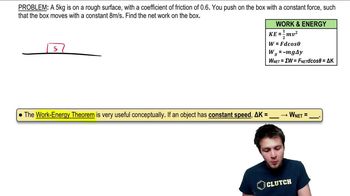Net Work & Work-Energy Theorem definitions Flashcards
 Back
BackNet Work & Work-Energy Theorem definitions
1/15
Terms in this set (15)
- Net WorkThe total work done on an object, calculated as the sum of work done by all forces acting on it.
- Work-Energy TheoremA principle stating that the net work done on an object is equal to the change in its kinetic energy.
- Kinetic EnergyThe energy an object possesses due to its motion, calculated as 1/2 mv^2.
- Applied ForceA force exerted on an object by a person or another object, contributing to work done.
- FrictionA force opposing motion, often resulting in negative work when acting against the direction of displacement.
- Normal ForceA perpendicular force exerted by a surface on an object in contact with it, typically doing no work if motion is horizontal.
- GravityA force of attraction between objects with mass, often acting vertically and doing no work if motion is horizontal.
- DisplacementThe distance and direction of an object's movement, crucial for calculating work.
- Net ForceThe vector sum of all forces acting on an object, used to calculate net work.
- Cosine ThetaThe cosine of the angle between force and displacement, used in work calculations.
- JoulesThe unit of work or energy in the International System of Units.
- MassA measure of the amount of matter in an object, influencing its kinetic energy.
- SpeedThe magnitude of velocity, affecting the kinetic energy of an object.
- FlowchartA diagram used to illustrate the steps for calculating net work using different methods.
- Energy TransferThe process of energy moving from one object to another, often quantified as work.



